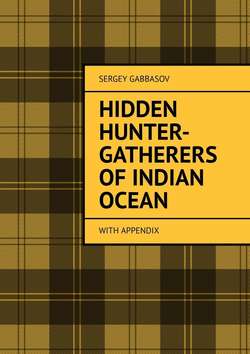Читать книгу Hidden Hunter-Gatherers of Indian Ocean. with appendix - Sergey Marlenovich Gabbasov - Страница 6
MONKEYS, SNAKES AND FOREST BEINGS
AHIKUNTIKA
ОглавлениеVery interesting people are still living today in the Eastern part of the country. This is “Kuravar” (in Tamil), so-called “Sri Lankan gypsies”. They are known as “ahikuntika” in Sinhala.
The Ahikuntikas are mostly confined to the generally arid parts of the north central and eastern parts of the island.
One of the earliest references made by a European was by Phillip Baldaeus, who wrote “among the inhabitants of the coast of Coromandel, and the Cingalese and Malabars are certain follows who possess the art of making serpents stand upright and dance before them which they perform by enchanting songs” (Baldaeus 1992).
Emerson Tennett in his “Natural History of Ceylon” described the use of a “snake stone” used by snake charmers (Tennett 1999).
John Davy in his record of his residence in Sri Lanka wrote: “during my residence in Ceylon, by the death of one of these performers, when his audience had provoked to attempt some unaccustomed familiarity with the cobra, it bit him on the wrist, and he expired the same evening” (Davy 2005).
J.Bennett provided an excellent description of an early 19th century performance by an iterant snake charming due from India, and a cautionary tale on buying cobras for those few, daring souls (such as himself) who wished to keep them as a pets (Bennett 2009).
The Ahikuntikayas were never accustomed to have permanent shelters. They built their huts usually on elevated grounds but necessarily near a river bank or a tank bund. The roof was always constructed either in the shape if a triangle or in a curvature with palm leaves or grass. Since each family needed a hut, the number of huts in a “colony” was always determined by the number of families moving in a given caravan. Such a collection of Ahikuntikaya shelters was called a “Kuppayama” which in its traditional Sinhala meaning is “a colony of social outcasts”.
These shelters always betrayed their semi-permanent character and had limited utensils. These included a knife (maskan), grinder (rolu), basin (traale), coconut scraper (iraman), pots (kadawa), saucepans (kunda) which were essential in every shelter. Dogs and donkeys also accompanied them in every journey. Nowadays this is rare due to the constraints of moving such animals through modern settlements even in rural settings (Widyalankara 2015).
The Ahikuntikas observe a custom of holding an annual conclave which is called “Varigasabha” (“meeting of clans”). Future plans of the community, nuptial bonds between clans, common problems encountered in maintaining their customs and livelihoods were the main items of concern.
There are also different sub-communities (kula): babaloru (barbers), kumbaloru
